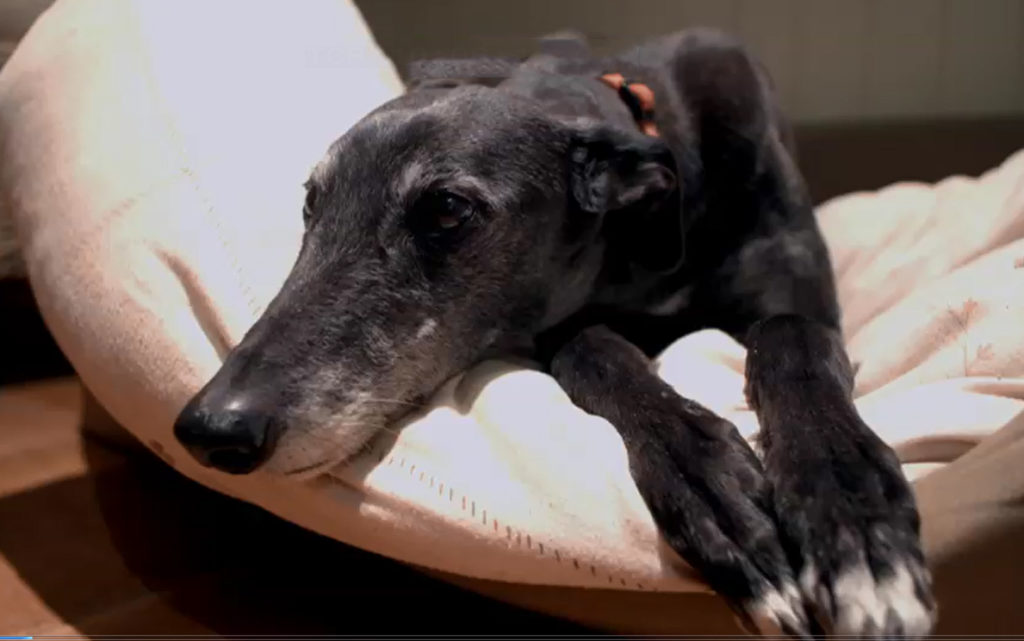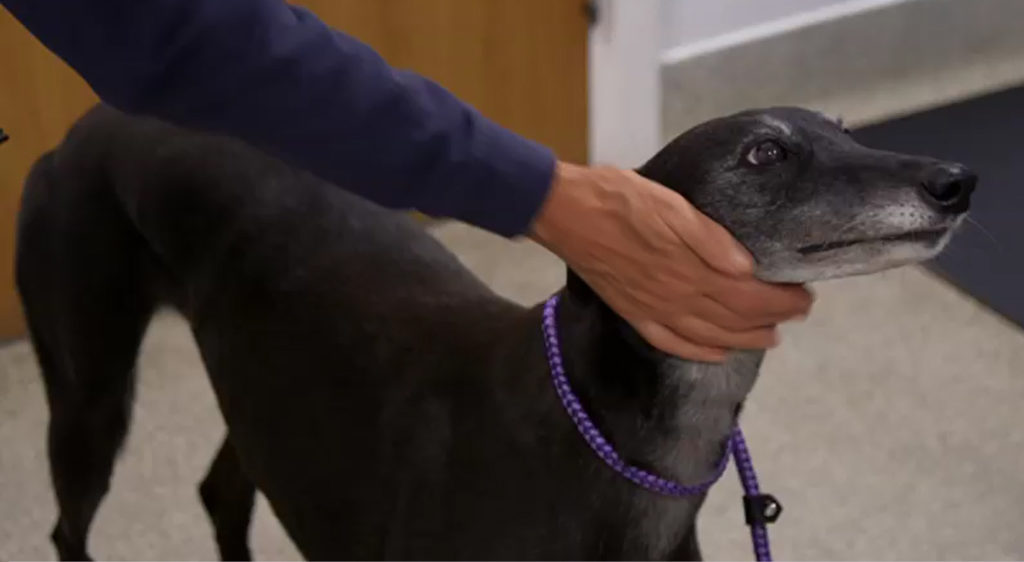Nine year-old Lola is an ex-race dog who was adopted from the Retired Greyhound Trust by couple Geoffrey and Dolores. She has had problems with her feet for some time and they’ve tried everything they can but can’t find what’s wrong, so turn to Noel for help. Expecting the state of the art diagnostic tools that Noel is renowned for, much to their surprise, the answer is in fact found with the help of something a little quirkier!

Lovely Lola is the very much loved family member of Geoffrey and Dolores, who were desperately trying to discover what was causing their beloved friend to not want to run around as all greyhounds love to do. Over several months they sought the help of many who could not put their finger on why Lola was struggling.
When Noel met Lola, he watched her walking and on solid ground was indeed very sore. Noel then had a brain wave and disappeared from his consulting room and returned with his own toothpaste. Perplexed and intrigued, Geoffrey and Dolores watched Noel apply some to the pads of Lola’s feet and corns were found to be the root cause of her soreness!
Now with the answers, the team proceeded to treat Lola and she had her corns surgically removed.
She was looked after at Fitzpatrick Referrals for two weeks who gave her all the care she needed during her healing. She had special booties manufactured in order to protect her feet during recovery, and she was able to go home, pain free. Now she is a bright and happy dog who runs and plays every day as she was born to do!

In Noels words
The one thing that I always say to my interns and residents is that all of the X-rays and scans in the world will not replace a good clinical examination. Looking at the patient is the single most important part of every consultation and sometimes the solution is incredibly simple, as it was in Lola’s case.
Where I grew up on a farm and when I started out in veterinary practice, all I had was my hands, ears, eyes and nose to make a diagnosis for any animal. The basics of a good thorough “look at the patient” which is performed systematically the same way each and every day is the absolute cornerstone of being a good clinician.
Thankfully for Lola, some toothpaste and a toothbrush uncovered the problem and the offending corns were cut out. It’s very important to protect the pads whilst they heal and so we kept her in for observation for a couple of weeks.
All’s well that ends well and at the end of the day, from James Herriot till the present day, a machine will never ever replace a good clinical examination. Thankfully the art of vet medicine cannot be taught to a machine, and luckily for me, as long as I have hands and eyesight – and maybe a little toothpaste – or some other eureka moment- All will be well.
